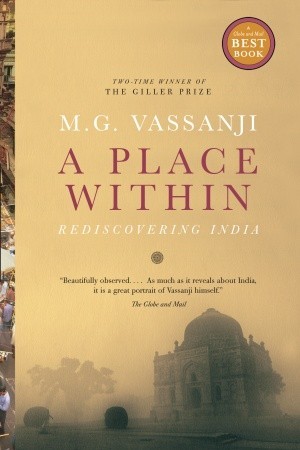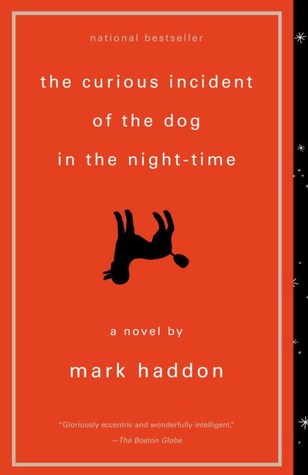Two quick reads (Book Reviews)
As I have not had time to write many full-length book reviews this year, I am continuing with my brief reviews of some selected reads. Unfortunately, 2021 is not producing as many high quality reads as last year. However, regression to towards the mean suggests that the next two quarters should be better than the first two!
Book #1: A Place Within by M. G. Vassanji

M. G. Vassanji is the author of two excellent novels I have read: The In-Between World of Vikram Lall and The Magic of Saida. Both stories take place in East Africa (Kenya and Tanzania, respectively), in the tightly-knit Indo-African community. A Place Within is a Vassanji’s travelogue to India were he tries to make sense of his origins and its contemporary society. Vassanji’s family belong to the Khoja sect of Islam. Being a Khoja in an Indian community makes one a minority twice over: a Muslim (rather than a Hindu), and an Ismaili (rather than a Sunni). Vassanji explains that the Khoja’s were flexible in their practices and adopted many of the traditions of their religious counterparts. The religious pluralism of Vassanji’s ancestors stands in sharp contrast to the bitter religious divides that led to bloody pogroms in Gujarat in 2002. Vassanji is often surprised by the nonchalance of his hosts about communal violence in India. He is often being told not to worry because the violence is only happening “elsewhere”, or even more disconcertingly “a couple miles away”.
When Vassanji does find the village of his ancestors in Gujarat, he is disappointed. There is of course no homecoming celebration, but there is also a lack of energy and spirit. Vassanji and his guide are only able to find one or two Khoja families, neither of whom are able to say anything about his family’s own history.
There is no Kunta Kinte moment; I did not come looking for one. If there was ever one close to it, it was when I first stepped on Indian soil, undertook that quick tour of the country that began with a train ride, the Puri Express.
Each section of the book was pleasant to read, but the narrative as a whole was disconnected and felt rambling at times. However, the reader will get flashes of Vassanji’s literary brilliance in his descriptions. Here he is writing about the IIAS in Simla (now Shimla), in the former Indo-Gothic Viceregal lodge:
Nights are cool and, on clear days of spring or the few days of summer, crisp; the moon when full is so large and low as to appear to have been simply hung there by the friendly, mischievous gods, and bathed in its thin white light the crowns of the oaks acquire a glowing cover; on moonless nights the stars are sharp, and the Milky Way is observable from the unlighted corners of the lawn, running like a strip of gossamer veil way up above, across the darkness and the beyond. Across the valley, the lights of the town like bright points conglomerate in a section of the darkness, an entire small galaxy viewed from up close; elsewhere on the valleys and the hills, isolated pinpricks of habitation. During the rains a thick swirling fog may overhang the area, its effects enhanced by the white and yellow lamps on posts; and with the grey Gothic building in the background the entire place acquires a certain macabreness. If one lingered a little in this night, did not turn away quickly into the embrace of a hearth, then that shadowy figure in the near distance who is barely visible might just respond to the call: “Heathcliff”.
Religious tension in India may be one of the reasons that the country does so badly at attracting foreign tourists each year. For example, the United Kingdom attracts twice and many international tourists as does India. This despite India’s tremendous size and weighty history. The problem lies in India’s disputed history, where iconic landmarks are often claimed by both Hindus and Muslims.
Ahmedabad, indeed Gujarat, is full of such neglected historical sites and architectural wonders. Perhaps there is simply too much of the past to cope with, written and rewritten, fragmentary and disputed; all of it seems to relate to sultan and rajas. If there is glory to remember, someone’s victory is someone else’s defeat, and memories are long, they are convenient. If history is taught in comic-book version of us-versus-them, it’s better that history itself has such a low premium. Better to keep your eyes on the future; on the stock markets and cricket scores; on globalization and the GDP; on American and China. And history can be revisited when it’s less personal and wounding.
Vassanji’s dislike of the BJP is made clear early on. Not only does that BJP inflate anti-Muslim sentiment, but it actively seeks to re-write history. BJP-run governments have re-written school textbooks to align with a Hindutva view of history rather than reality. Formerly fringe theories from the likes of Y. Sudershan Rao’s that the Ramayana and Mahabharata are literal accounts of Indian history are now part of the curriculum. Instead of relying on anthropological evidence that modern Indians descend from migrants from Central Asia, the Hindu Nationalists have made the opposite claim: that populations of the rest of the world descend from India. By saffronising the official history, the BJP is ensuring that India will become a more hostile to country for both religious minorities and liberals like M. G. Vassanji.
Book #2: The Curious Incident of the Dog in the Night-Time by Mark Haddon

The Curious Incident of the Dog in the Night-Time was Mark Haddon’s first novel published for an adult audience. The story centres around Christopher, an autistic teenager with a difficult family life. Christopher lives alone with his working-class father who struggles to deal with son’s health demands. The novel begins with Christopher finding his neighbour’s (dead) dog skewered on the lawn with a pitch fork. The neighbour assumes that Christopher has committed the heinous crime and calls the police. The reader quickly realizes that Christopher’s autism leads to disastrous encounters with officialdom. Christopher is unable to understand the meaning of questions beyond their face value. He is also prone to violence when he is touched. Having time to reflect on the strange course of events that day, Christopher (in prison for assaulting one of the police officers) is unable to determine who would want to kill her neighbour’s dog. He commits to solving the crime using the same logic employed by the likes of Sherlock Holmes. The title of the book derives its name from the famous Holmes’ mystery “The Adventure of Silver Blaze”:
Gregory: Is there any other point to which you would wish to draw my attention?
Holmes: To the curious incident of the dog in the night-time.
Gregory: The dog did nothing in the night-time.
Holmes: That was the curious incident.
I found The Curious Incident to be an undemanding book to read; although it was never a page turner. It was refreshing to have a plot narrated from the perspective of an autistic teenager in a working class community. Haddon makes it easy to imagine how a slightly dysfunctional marriage would be thrown into total chaos by an autistic child with significant needs. Not that the books are comparable, but I found Steve Silberman’s NeuroTribes to be more engaging for what it is like to have or raise a child with autism. I would categorize The Curious Incident as a good “beach read”. One reason why neurodiversity is important is that it provides society with a source of insight that may otherwise be obscured from view:
There are three men on a train. One of them is an economist and one of them is a logician and one of them is a mathematician. And they have just crossed the border into Scotland and they see a brown cow (and the cow is standing parallel to the train). And the economist says, ‘Look, the cows in Scotland are brown.’ And the logician says, ‘No, there are cows in Scotland of which one, at least, is brown.’And the mathematician says, ‘No. There is at least one cow in Scotland, of which one side appears to be brown. And it is funny because economists are not real scientists, and because logicians think more clearly, but mathematicians are best.
